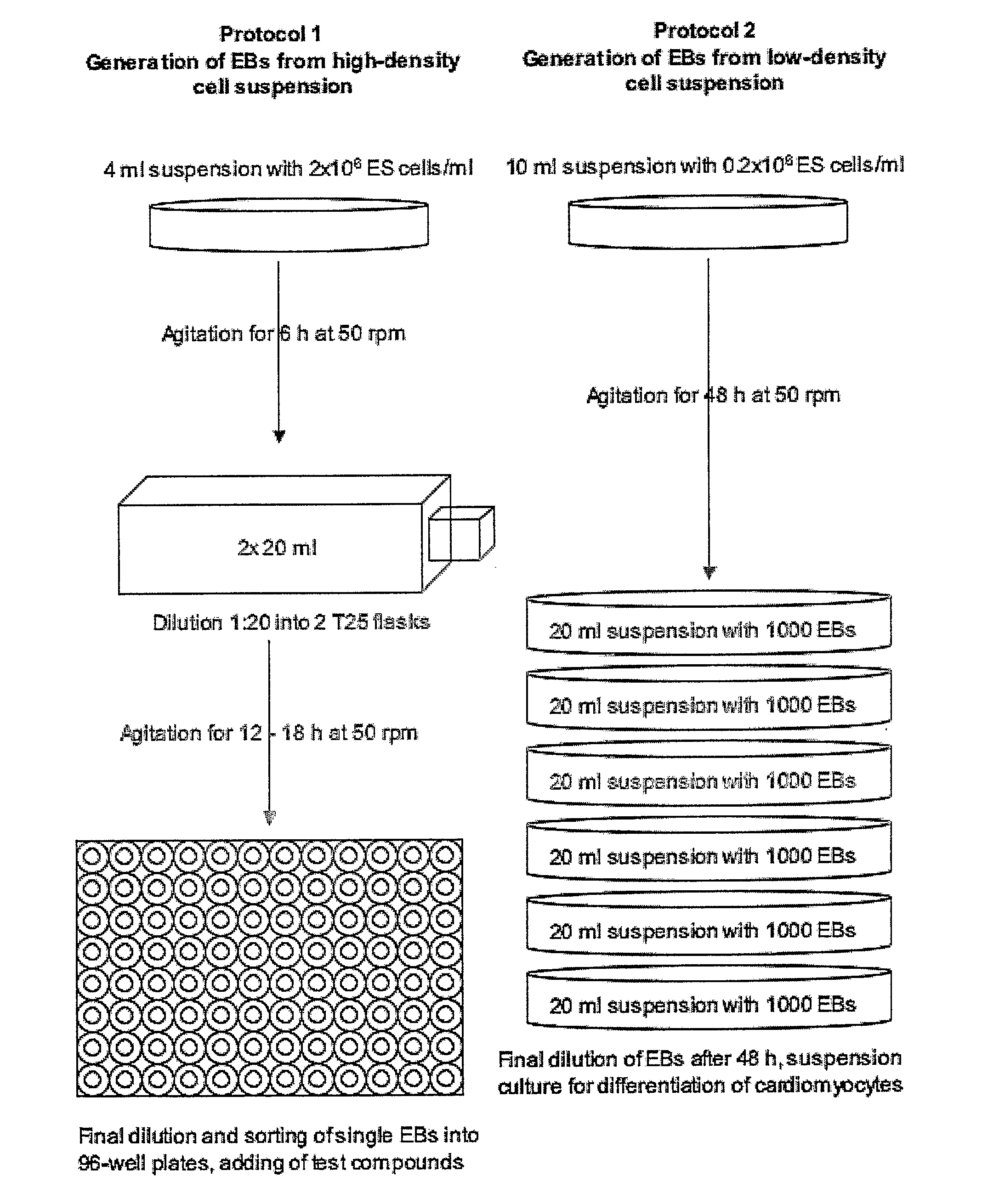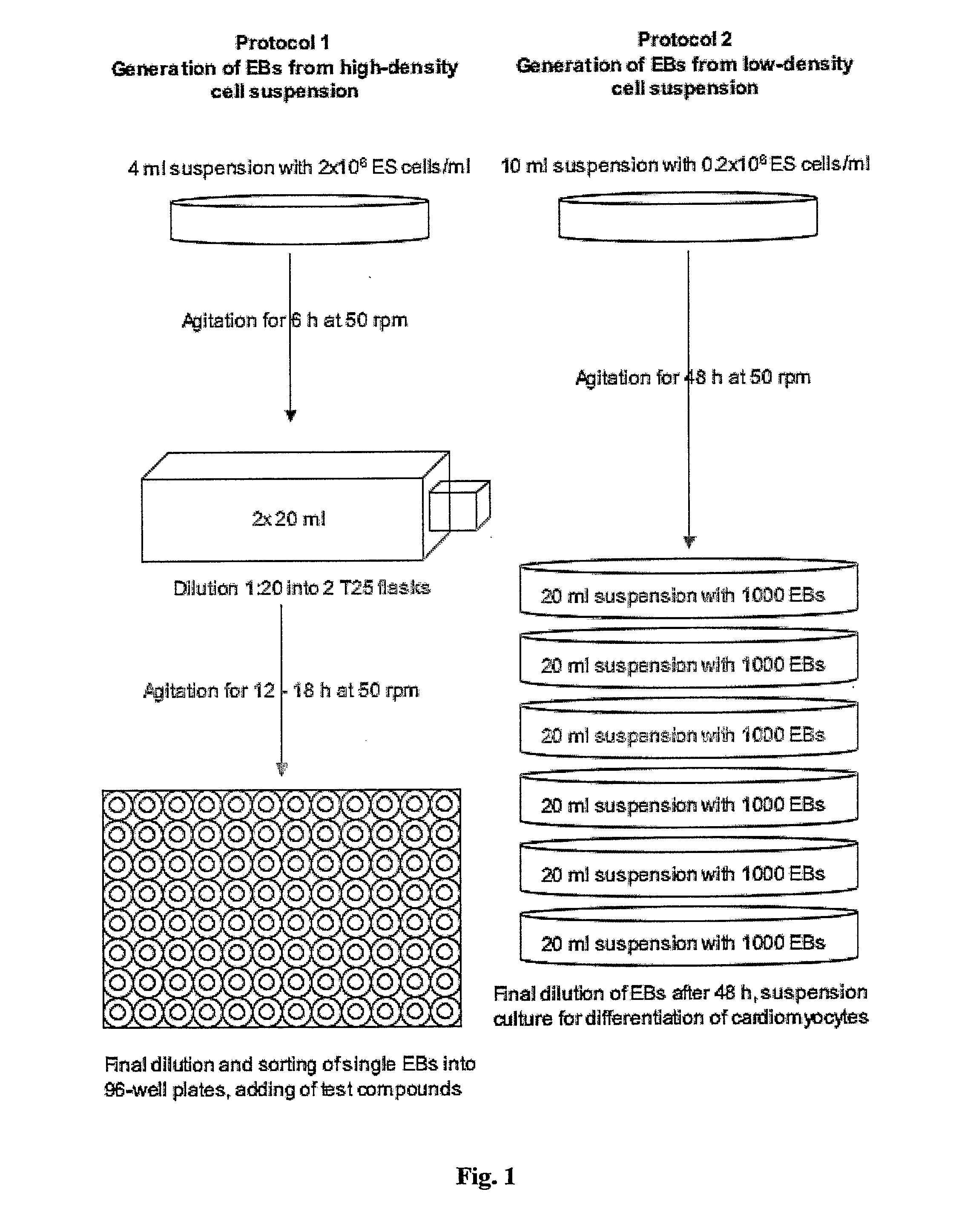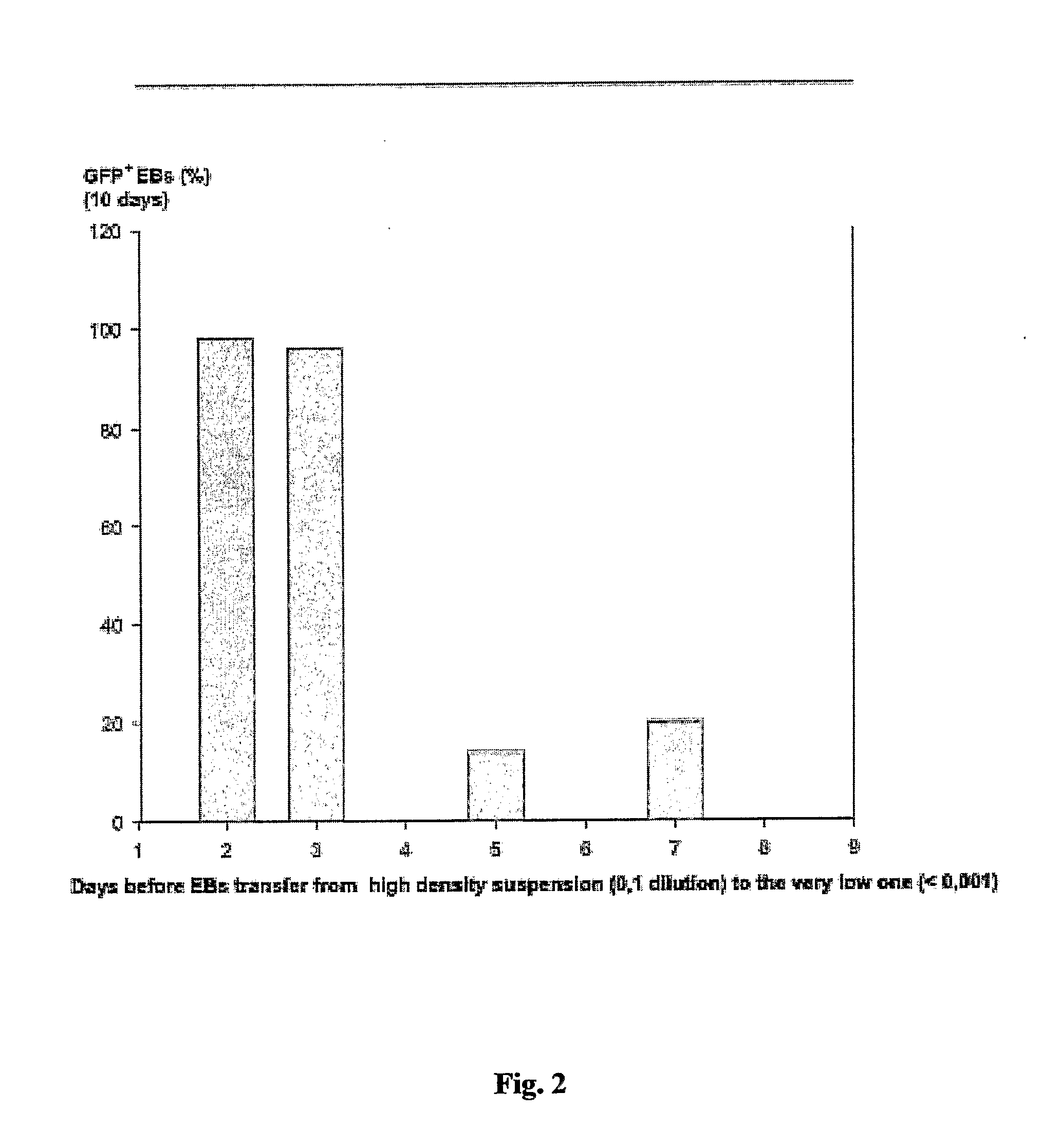Novel Method for the Preparation of Embryoid Bodies (Ebs) and Uses Thereof
a technology of embryoid bodies and embryos, which is applied in the field of embryoid body preparation, can solve the problems of insufficient amount of embryoid bodies, insufficient number of embryoid bodies, and repeated tests in multiple cell lines, etc., and achieves the effects of improving the yield of embryoid bodies, high density, and operating expense for large-scale production
- Summary
- Abstract
- Description
- Claims
- Application Information
AI Technical Summary
Benefits of technology
Problems solved by technology
Method used
Image
Examples
example 1
Generation of “Embryoid Bodies” (EBs) from High Density Cell Suspensions and Differentiation of Cardiac Cells (FIG. 1, Protocol 1)
[0169] Mouse embryonic stem cells (ES cells, clone D3, ATCC CRL 1934) were stably transfected with the pαMHC-GFP vector containing the gene of the green fluorescent protein under control of the cardiac a-myosin heavy chain (α-MHC) promotor. To obtain this vector, a 5.5 kb fragment containing the promotor region of the mouse (α-myosin heavy chain gene (Genbank 471441) was introduced into the polylinker of the pEGFP-1 vector (Clontech Laboratories).
[0170] ES cells were cultured on 10 cm petri dishes (Falcon, Becton Dickinson) at a density of 1.4×106 in DMEM (Gibco, Invitrogen) supplemented with 15% FCS (Gibco, invitrogen, batch controlled) and 1×103 U / ml LIF (Chemicon) on a layer of feeder cells (inactivated mouse embryonic fibroblasts, prepared according standard protocols; see also description of the invention above). Cells were incubated at 37° C., 7% ...
example 2
Generation of “Embryoid Bodies” (EBs) from Low Density Cell Suspensions and Differentiation of Cardiac Cells (FIG. 1, Protocol 2)
[0173] ES cells were cultured as describe in Example 1. To generate EBs, ES cells were cultured in suspension at a density of 0.2×106 cells / ml in a 10 cm petri dish (Greiner, Darmstadt, Germany) in 10 ml IMDM with 20% FCS (Invitrogen, Karlsruhe, Germany) at 37° C., 5% CO2, 95% humidity on a rocking table (GFL 3006, GFL, Braunschweig, Germany) at 50 rpm for 48 hours. On day 2, 100-2000 EBs were transferred to 10 cm bacterial dishes (Greiner) into a volume of 10 ml IMDM 20% FCS and incubated at 37° C., 5% CO2, 95% humidity, either with or without agitation. On day 5 and 7, or every other day for high density suspensions such as 2000 EBs / 10 ml, the medium was replaced by 10 ml of fresh medium. On day 14, fluorescent areas representing cardiac cells were detected by fluorescence mircoscopy using a Zeiss Axiovert 200 M with a 10× Achroplan objective, a HQ-filt...
example 3
Effect of Embryotoxic Compounds on Differentiation Capacity of EBs towards Cardiomyocytes
[0174] EBs were generated as described in Example 1. At day 1, 30 EBs were transferred to each well of a bacteriological 6-well plate (Greiner) into a volume of 3 ml IMDM 20% FCS, and test compounds with known embryotoxic potential were added at different concentrations as indicated in the figures (solvent: DMSO, final concentration of DMSO: 0.1%). Test compounds were chosen from a list of compounds recommended for a validation study on in vitro embryotoxicity tests by the European Center for the Validation of Alternative Methods (ECVAM) (see Brown, NA 2002; ATLA 30, 177-198). Each compound concentration was tested in triplicate in three individual experiments. EBs were cultured at 37° C., 5% CO2, 95% humidity. On day 5, cultures were fed with 2 ml of fresh medium, and fresh test compounds were added. On day 14, EBs on each plate were counted, lysed in lysis buffer (20 mM Tris-HCl / 0.5% TritonX ...
PUM
| Property | Measurement | Unit |
|---|---|---|
| humidity | aaaaa | aaaaa |
| time | aaaaa | aaaaa |
| time | aaaaa | aaaaa |
Abstract
Description
Claims
Application Information
 Login to View More
Login to View More - R&D
- Intellectual Property
- Life Sciences
- Materials
- Tech Scout
- Unparalleled Data Quality
- Higher Quality Content
- 60% Fewer Hallucinations
Browse by: Latest US Patents, China's latest patents, Technical Efficacy Thesaurus, Application Domain, Technology Topic, Popular Technical Reports.
© 2025 PatSnap. All rights reserved.Legal|Privacy policy|Modern Slavery Act Transparency Statement|Sitemap|About US| Contact US: help@patsnap.com



